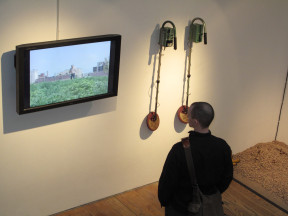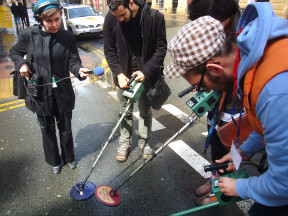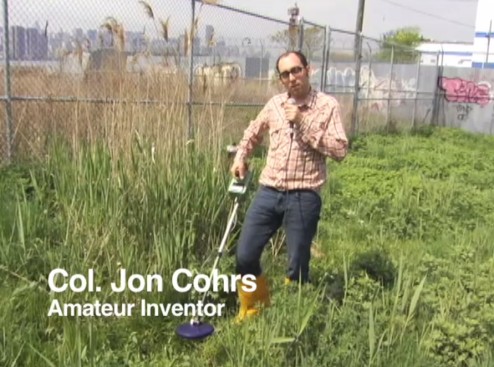In 1950’s there was a massive underground oil spill in Greenpoint, New York surrounding Newtown creek. This has been well documented since the 1970’s when a study showed that somewhere between 17- 20 million gallons of petroleum had leaked into the surrounding water and soil. This is roughly 3 times the size of the Exxon Valdez spill. Though there has been a lot of publicity surrounding this spill, it is difficult to grasp the magnitude or area of the spill because it is below the surface. Much of the information about the spill is conveyed through maps, statistics and scientific data but t his information lacks the tangibility or impact of seeing a blackened oil covered beach.
his information lacks the tangibility or impact of seeing a blackened oil covered beach.
The project, called the Urban Prospector, is basically a modified metal detector outfitted with combustible gas sensor that can be built for under 100 dollars. Through efficient design and user testing it will become an effective tool that is both easy to build and reliable.
Using a used metal detector found at a pawn shop or one ebay, one can remove the metal sensor. Then one replaces this sensor with either a benzene sensor or a hydrocarbon sensor. The analog data emitted by the sensor will analyzed by a microchip that will interface with the main computer running the metal detector. By using a basic metal detector as a host, one can use many of it’s built in features such as sound response and direction to create a useful tool.
By scanning the surface of ones neighborhood, you will be able to determine pockets of oil. Until recently, hydrocarbon/oil prospecting has been a field left to the “professionals”, because they require sophisticated tools for detection. But in much the same way gold prospecting empowered people to find small nuggets of “profit”, urban prospecting now has the potential to find small nuggets of oil near oil spills, abandoned gas stations, and industrial sites. Given the current high cost of oil these urban spills or potential “gold mines” waiting to be tapped.
In larger sense, locals can also use this tool to determine contaminated spots in their neighborhoods and map out areas of toxicity in a tangible way that is not abstracted by maps or scientific reports. This then creates local involvement at a grassroots level and raises awareness of underground spills which permeates my neighborhood but also in communities elsewhere.

